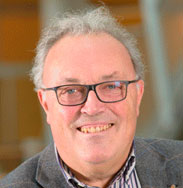Extensive use of numerical models and simulation, for all the phases of product lifecycle, keys drivers for risk management and enterprises competitiveness: Dassault experience and Systematic Cluster roadmap
Gérard Poirier
Dassault Aviation
Simulation is defined as a scientific tool and also data processing method which allows the exploitation of a virtual representation - or model – of the behavior of an object, a system, a phenomenon, an industrial process or an organization.
The purpose of the implementation of these models is generally to analyze and include/understand the operation of complex systems, in order to envisage and control their behavior in all their life-cycle. It presents many assets, first of an economic nature, because it makes possible to have a better reactivity, a better capacity of anticipation and to bring profits of competitiveness.
Modeling and simulation always go hand in hand. The critical analysis of the results, the comparison with theoretical or experimental studies allows an improvement of the subjacent models, their parameters and data-processing programs of simulation. When the models were checked like predictive, simulation make possible to anticipate the behavior of a system in new configurations.
Simulation has limits however:
- The comprehension of certain phenomena still today is badly controlled making thus difficult their modeling,
- Some models to be predictive require a computing power not yet available today,
- Some systems are of a complexity such as their simulation “in block” is not yet possible.
It is important to note that the characteristics of a “good simulation” have a strong link with the aims in view, the existing knowledge on the system and the practical conditions of its operating.
The subject “Simulation” crosses all the axes of roadmap OCDS:
- the HPC, of which the tools and methods make it possible as well as possible to exploit powerful material architectures able to accelerate simulations,
- the embedded systems, which provide a context where simulation is subjected to specific constraints (resource material limited, requirements for reliability, etc),
- the treatment of Big Data, which can provide a raw material from which it is possible to derive models for simulation.
Examples from Dassault experience and Systematic Cluster roadmap will highlight why and how an extensive use of numerical models and simulation, for all the phases of product lifecycle, are key drivers for risk management and enterprises competitiveness.
Curriculum
Birth: March 28, 1949 in Fontainebleau (Seine et Marne, France)
Education: Ph. D. in Applied Mathematics, Numerical Analysis
Professional Background:
• Dassault Aviation, Deputy Vice President for Scientific Strategy in charge of R&D Partnerships and Cooperation
• Vice President of Systematic Cluster (ITC - Complex systems development cluster in Paris region), Chairman of System Design and Development Tools working group,
• Vice President of ASTech Cluster (Aeronautic and Space Cluster in Paris region)
• Member of Executive Board of the TERATEC High Performance Computing Association,
• President of SCILAB International Partnership Committee,
• Member of the Management board of IUT Paris Jussieu (University Institute of Technology) on physical measurements
